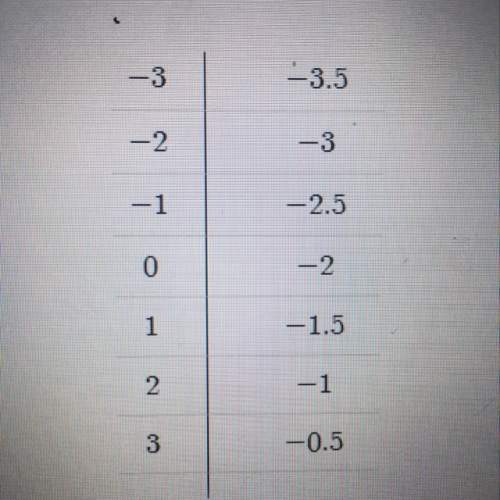
Mathematics, 09.11.2020 15:40 cindyc1103
Figure ABCD is transformed to obtain figure A′B′C′D′:
A coordinate grid is shown from negative 6 to 6 on both axes at increments of 1. Figure ABCD has A at ordered pair negative 4, 4, B at negative 2, 2, C at negative 2, negative 1, D at negative 4, 1. Figure A prime B prime C prime D prime has A prime at ordered pair 3, negative 4, B prime at 5, negative 2, C prime at 5, 1, D prime at 3, negative 1.
Part A: Write the sequence of transformations that changes figure ABCD to figure A′B′C′D′. Explain your answer and write the coordinates of the figure obtained after each transformation. (6 points)
Part B: Are the two figures congruent? Explain your answer. (4 points)


Answers: 1


Another question on Mathematics

Mathematics, 21.06.2019 16:00
The level of co2 emissions, f(x), in metric tons, from the town of fairfax x years after they started recording is shown in the table below. x 2 4 6 8 10 f(x) 26,460 29,172.15 32,162.29 35,458.93 39,093.47 select the true statement.
Answers: 1

Mathematics, 21.06.2019 18:30
In the diagram below? p is circumscribed about quadrilateral abcd. what is the value of x
Answers: 1

Mathematics, 21.06.2019 18:40
Juliana says that she can use the patterns of equivalent ratios in the multiplication table below to write an infinite number of ratios that are equivalent to 6: 10. which statement explains whether juliana is correct? she is correct because she can multiply 6 and 10 by any number to form an equivalent ratio. she is correct because 6: 10 can be written as 1: 2 and there are an infinite number of ratios for 1: 2. she is not correct because the multiplication table does not include multiples of 10. she is not correct because 6: 10 is equivalent to 3: 5 and there are only 9 ratios in the multiplication table that are equivalent to 3: 5.
Answers: 1

Mathematics, 21.06.2019 19:00
Suppose that one doll house uses the 1 inch scale, meaning that 1 inch on the doll house corresponds to 1/2 foot for life-sized objects. if the doll house is 108 inches wide, what is the width of the full-sized house that it's modeled after? in inches and feet.
Answers: 2
You know the right answer?
Figure ABCD is transformed to obtain figure A′B′C′D′:
A coordinate grid is shown from negative 6 to...
Questions












Health, 27.07.2019 06:30


History, 27.07.2019 06:30


History, 27.07.2019 06:30




Social Studies, 27.07.2019 06:30




